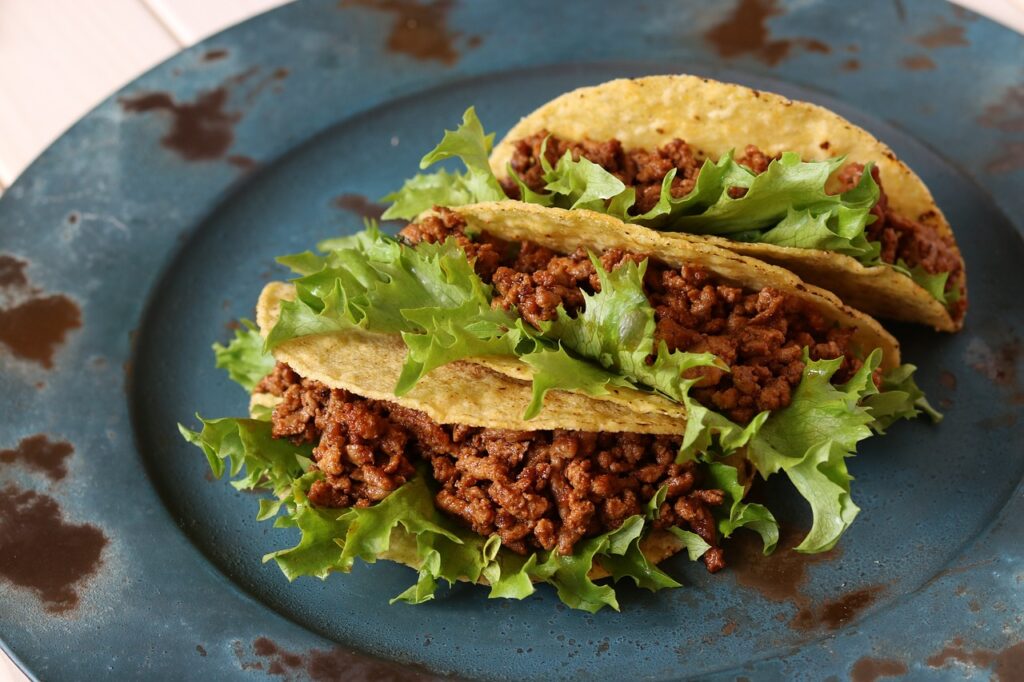Italy, a country renowned for its rich cultural heritage, picturesque landscapes, and, most importantly, its exquisite cuisine, is a paradise for food lovers. From the rolling hills of Tuscany to the bustling streets of Naples, Italian food is as diverse as its regions, each offering unique flavors and culinary traditions. This guide will take you on a gastronomic journey through Italy, highlighting the must-try dishes, local delicacies, and iconic food experiences that will leave your taste buds yearning for more.
The Heart of Italian Cuisine: Understanding Regional Diversity
Italian cuisine is not a monolith; it’s a mosaic of regional specialties. Each region boasts its own culinary identity, influenced by geography, climate, and history. Here’s a breakdown of some key regions and their signature dishes.
Tuscany: The Land of Simple, Rustic Flavors
Tuscany is celebrated for its straightforward yet flavorful dishes that showcase high-quality, local ingredients. The Tuscan diet is rich in bread, beans, olive oil, and meats, with an emphasis on simplicity and authenticity.
- Bistecca alla Fiorentina: This iconic Florentine steak, sourced from the Chianina cattle, is a carnivore’s dream. Grilled to perfection and seasoned with just salt, pepper, and a drizzle of olive oil, it highlights the quality of the meat.
- Ribollita: A hearty, traditional soup made with bread, beans, and seasonal vegetables. Originally a peasant dish, Ribollita exemplifies the Tuscan talent for transforming simple ingredients into something extraordinary.
- Pappardelle al Cinghiale: Wide ribbons of pasta paired with a rich, slow-cooked wild boar sauce. This dish is a testament to Tuscany’s love for game meat.
Emilia-Romagna: The Culinary Powerhouse
Emilia-Romagna is often hailed as the gastronomic heart of Italy, home to some of the country’s most famous products and dishes.
- Parma Ham (Prosciutto di Parma): This delicately cured ham is a staple in Emilia-Romagna. Thinly sliced and served with melon or figs, it’s a perfect balance of sweet and salty flavors.
- Parmigiano-Reggiano: Known as the “King of Cheeses,” Parmigiano-Reggiano is a hard, granular cheese that is aged for at least 12 months. It adds a burst of umami to any dish, from pasta to risotto.
- Tagliatelle al Ragù: Often mistaken for spaghetti Bolognese outside Italy, this dish features fresh egg pasta with a rich meat sauce made from minced beef and pork, simmered with tomatoes, wine, and aromatic vegetables.
Naples: The Birthplace of Pizza
Naples is synonymous with pizza, but the city’s culinary offerings extend far beyond its famous pies.
- Pizza Margherita: The quintessential Neapolitan pizza, made with San Marzano tomatoes, mozzarella di bufala, fresh basil, salt, and extra-virgin olive oil. The simplicity of the ingredients allows each flavor to shine.
- Sfogliatella: A traditional Neapolitan pastry with a crispy, layered shell filled with sweet ricotta, semolina, and citrus peel. It’s a delightful treat to enjoy with a cup of espresso.
- Spaghetti alle Vongole: This classic dish of spaghetti with clams, garlic, olive oil, white wine, and parsley captures the essence of the Mediterranean in every bite.
Beyond Pasta and Pizza: Italy’s Lesser-Known Delicacies
While pasta and pizza often steal the spotlight, Italy’s culinary repertoire includes a wide array of lesser-known but equally delicious dishes.
Arancini and Supplì: Sicilian Street Food Delights
Sicily offers a treasure trove of street food, with arancini and supplì being among the most beloved.
- Arancini: These are deep-fried rice balls stuffed with ragù, mozzarella, and peas. The crispy exterior and savory filling make them a perfect snack or light meal.
- Supplì: Similar to arancini, supplì are Roman rice croquettes filled with mozzarella and ragù. They are typically oval-shaped and served hot, with the cheese melting in the center.
Cicchetti: Venetian Tapas
In Venice, cicchetti are small snacks or side dishes typically served in bàcari (traditional bars).
- Sarde in Saor: This dish consists of marinated sardines, served with onions, pine nuts, and raisins. It’s a beautiful balance of sweet and sour flavors.
- Baccalà Mantecato: Creamy, whipped salt cod served on crostini. This delicacy highlights the Venetian love for seafood and their skill in preparing it.
Savoring the Sweet Life: Italian Desserts
Italian desserts are the perfect ending to a delicious meal, with each region offering its own sweet specialties.
Tiramisu: The Quintessential Italian Dessert
Originating from the Veneto region, tiramisu is a luscious layered dessert made with coffee-soaked ladyfingers, mascarpone cheese, eggs, sugar, and cocoa powder. Its name, meaning “pick me up,” reflects its energizing combination of coffee and sugar.
Cannoli: Sicilian Sweet Treats
Cannoli are tube-shaped shells of fried pastry dough, filled with a sweet, creamy ricotta cheese mixture. Often garnished with chocolate chips, candied fruit, or pistachios, they are a delightful indulgence.
Gelato: Italy’s Answer to Ice Cream
Gelato is a denser, creamier version of ice cream, made with a higher proportion of milk and less air. Popular flavors include pistachio, stracciatella (chocolate chip), and fruit sorbets. Enjoying a gelato while strolling through an Italian piazza is an experience not to be missed.
Wine and Dine: Exploring Italy’s Wine Regions
Italy is one of the world’s top wine producers, offering a diverse range of wines that pair perfectly with its cuisine.
Tuscany: Chianti and Brunello di Montalcino
Tuscany is famous for its red wines, particularly Chianti and Brunello di Montalcino.
- Chianti: A versatile wine made primarily from Sangiovese grapes, Chianti is known for its fruity flavors and earthy undertones. It pairs well with a variety of dishes, from pasta to grilled meats.
- Brunello di Montalcino: This prestigious wine is also made from Sangiovese grapes but requires longer aging. It boasts complex flavors of dark fruit, leather, and spices, making it ideal for hearty meat dishes.
Piedmont: Barolo and Barbaresco
Piedmont, located in the northwestern part of Italy, is home to some of the country’s most esteemed wines.
- Barolo: Often referred to as the “King of Wines,” Barolo is made from Nebbiolo grapes. It is known for its bold tannins, high acidity, and flavors of cherry, rose, and tar. Barolo is best enjoyed with rich dishes like braised meats and truffle-infused risottos.
- Barbaresco: Similar to Barolo but generally more approachable in its youth, Barbaresco also features Nebbiolo grapes. It offers elegant flavors of red fruit, flowers, and spice, making it a great match for roasted meats and aged cheeses.
Veneto: Prosecco and Amarone
Veneto, in northeastern Italy, produces a wide range of wines, from sparkling to full-bodied reds.
- Prosecco: This sparkling wine, made from Glera grapes, is known for its light, fruity flavor and refreshing effervescence. Prosecco is perfect for celebrations and pairs well with light appetizers and seafood.
- Amarone della Valpolicella: A rich, full-bodied red wine made from partially dried grapes. Amarone is characterized by its intense flavors of dried fruit, chocolate, and spice, and pairs wonderfully with robust dishes like game and aged cheeses.
Experiencing Italy’s Food Festivals
Italy’s food festivals are a vibrant celebration of local produce, culinary traditions, and community spirit. Attending these festivals offers a unique opportunity to taste regional specialties and engage with local culture.
Truffle Festivals: Alba and Beyond
Piedmont is famous for its truffles, particularly the white truffles from Alba. The Alba Truffle Festival, held in the autumn, is a must-visit for truffle enthusiasts. The festival includes truffle hunts, markets, and gourmet meals featuring this prized delicacy.
Cheese Festivals: Bra and Pienza
Italy’s rich cheese-making tradition is showcased at festivals like Cheese in Bra, Piedmont, and the Pecorino Cheese Festival in Pienza, Tuscany. These events offer tastings, workshops, and the chance to meet artisan cheesemakers.
Chocolate Festivals: Perugia’s Eurochocolate
Perugia, in Umbria, hosts Eurochocolate, one of the largest chocolate festivals in Europe. Visitors can indulge in a wide array of chocolate products, from traditional treats to innovative creations, and participate in chocolate-making workshops and demonstrations.
Tips for Food Lovers Traveling in Italy
To make the most of your culinary journey through Italy, keep these tips in mind:
- Embrace Local Customs: Italians take their meals seriously, with specific customs and etiquette. For example, it’s common to enjoy a leisurely lunch with multiple courses, and coffee is usually consumed after meals, not with them.
- Learn Basic Italian Phrases: Knowing a few food-related phrases can enhance your dining experience. Words like “buongiorno” (good

